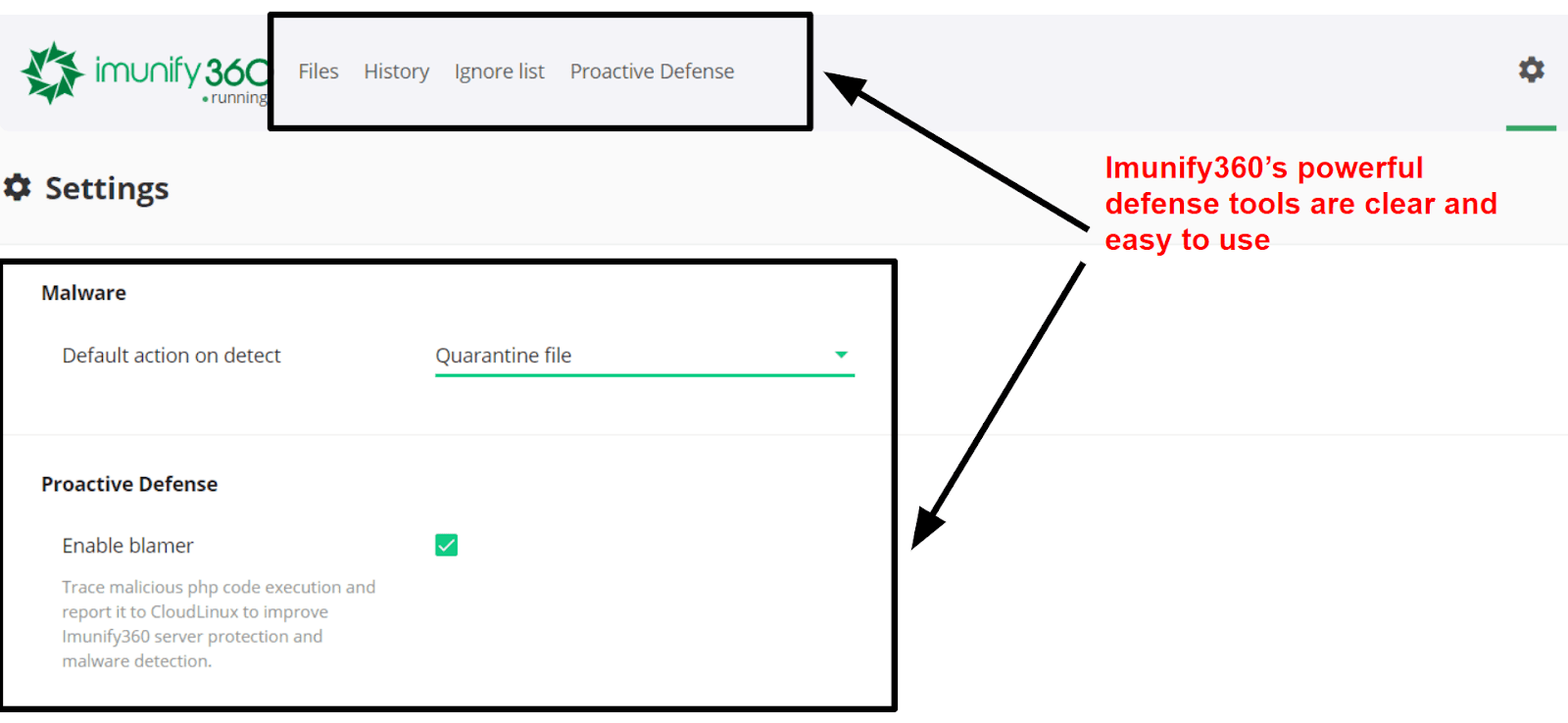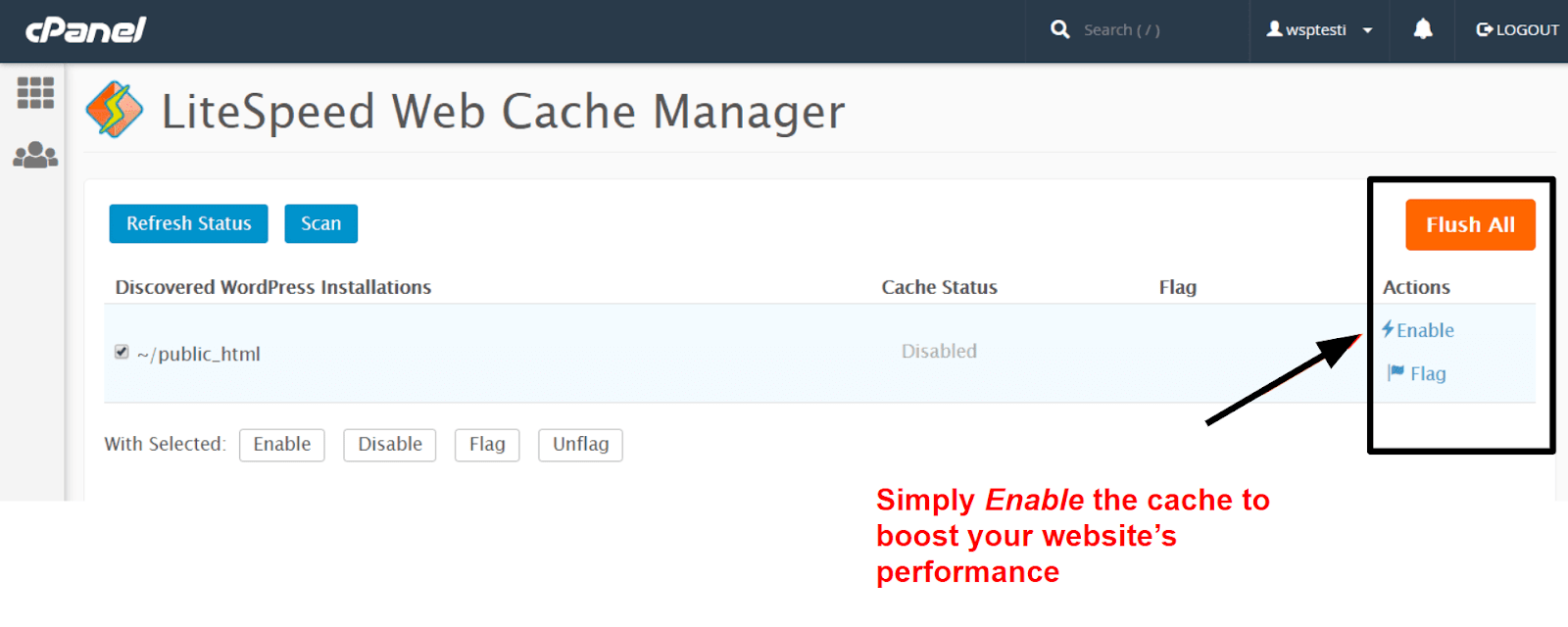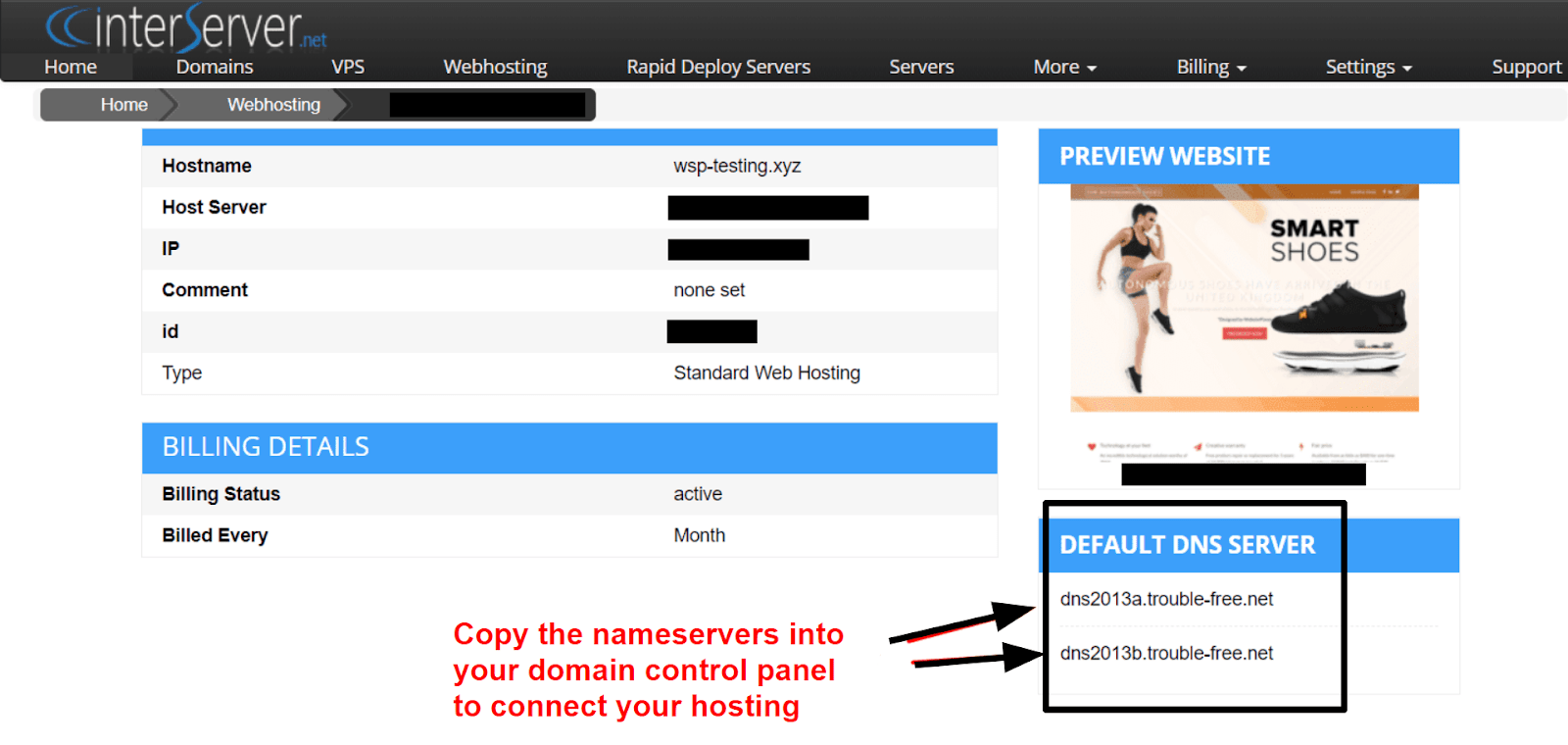Looking over InterServer’s affordable shared hosting plans, it’s easy to get suspicious. Can a low monthly price of $2.50 really net you unlimited resources, useful extra features, and powerful security tools? What’s the catch?
On paper, everything seems promising. InterServer boasts 19 years of experience in the web hosting business and a wide variety of plans, from shared hosting to reseller plans, VPS (virtual private server) machines, and dedicated servers. Plus, all four of InterServer’s data centers are located in the US, so North American users can reasonably expect great speeds.
Still, I had to see for myself how it actually performs. To find out, I signed up to InterServer myself, and tested it thoroughly for months.
Long story short? InterServer provides a great service that might be right for you. In my in-depth comparison of the best web hosts today, it came in at the very respectable third place, beating heavy-hitting competitors like the premium Kinsta. I did encounter some interesting surprises along the way, so read on to find out exactly what you can expect as a customer.
Unlimited Resources, Unlimited Domains, and Powerful Extras
InterServer’s shared hosting comes in two forms: Linux hosting, described simply as Standard Web Hosting, and Windows hosting, described as ASP.NET. WordPress and other popular CMS (content management systems) perform best on Linux hosting, which is based on the popular cPanel control panel. Windows hosting, on the other hand, is almost exclusively used for web projects dependent on Microsoft technologies, such as ASP.NET or MSSQL.
For the purpose of this review, I signed up for the Linux-based Standard Web Hosting plan for $2.50. It includes a lot of cool features, but first and foremost is the unlimited amount of resources.
Now, unlimited doesn’t mean you can park your entire media library on your account, or make it into a downloads portal. What it does mean is that as long as you adhere to a fair use policy, you don’t have to worry about running out of space or bandwidth ever again.
This is fantastic news, but it doesn’t mean that you’ll be able to stick with shared hosting and let your website keep growing forever. A massively successful website will require more CPU and RAM resources, as many simultaneous visitors put a big strain on a shared server. If that happens, you’ll have to upgrade to a VPS.
What else does InterServer have for us? SSL certificates. Everybody gets one! The company includes a Let’s Encrypt SSL certificate with each shared account, making sure you’re padlock protected. SSL is a must for running an e-commerce store, ensuring your visitors’ privacy, and getting better Google rankings. The certificate doesn’t come pre-installed, but the support agent I spoke with was more than happy to install it himself.
I proceeded to test InterServer’s SSL tech through the Qualys SSL test, where my website got a fantastic A ranking.
Next, all Linux accounts come with the Softaculous one-click installation tool. Use it to install WordPress, Joomla, the SitePad website builder, and hundreds of other CMS in a minute or two. If you’re switching to InterServer from a different web host, no need to do any of the work yourself. InterServer provides free website migrations with all accounts.
The one important feature that InterServer lacked was remote backups. You can set up a schedule and create backups on your local hosting drive, but I would’ve wanted to see an automatic remote option. You’ll just have to be a responsible adult and transfer these backups to a remote location yourself, to ensure that a dreaded security breach doesn’t cost you everything.
Alright, those were the basics. Now for some really cool features:
Ironclad Security Tools and Protocols
Keeping your website secure and free of malicious files is of the utmost importance, but most hosting companies are more like your fun uncle than your possibly overprotective parents. That is, some will try to upsell you with a security suite, others might give some helpful advice, but very few will provide you with everything you need to keep your website safe.
This is where InterServer truly shines. Its InterShield Security firewall blocks outside attackers, utilizing machine learning to stay ahead of the threats. This defense is automatically included with all plans. In addition, you’ll have access to the ModSecurity tool, providing another layer of firewall defenses, and to Imunify360, which will constantly scan your hosting drive for malicious files.
And the best part? Everything is included in your plan, free of charge.

LiteSpeed Caching and Cloudflare CDN
Your website’s speed can be vastly improved by using caching, a process that saves static copies of your pages for future use. LiteSpeed, one of the best web server technologies available today, provides all the caching tools needed to boost your performance.
You’ll get access to LiteSpeed caching through cPanel, and the integrated tool will quickly scan your drive and make cached copies of your pages. For advanced pages that require a good amount of computing power, this can save valuable seconds in loading time..

Another excellent integration is with Cloudflare’s CDN (content delivery network). Cloudflare’s global fleet of servers will cache copies of your website’s pages, and each one of your visitors will be served from a server location close to them. It’s like turning your website into McDonalds, with a location on every corner, but presumably offering better nutritional value.
That’s right, I said it.
Mostly static websites (like portfolios and business pages) will benefit the most out of a CDN, as it has the potential to significantly cut loading times for visitors far away from InterServer’s data centers. If your website is constantly updated and contains a lot of dynamic content, a CDN will have less of an effect.
Unlimited Domains and Websites
You’ll often find that there’s a limit on the number of separate websites you can build with a shared web hosting plan. You might have enough disk space available for another small project you want to bring online (like a cat sweater consulting firm) but you’ll either be limited to using subdomains, or not even have access to the databases needed to install more WordPress instances. Actually, this was the case with every other basic shared plan I tested.
Well, InterServer is different. Open as many databases as you want, and use the domain manager to add extra domains, running completely separate websites. This is great if you’re looking to make the most out of your unlimited plan and aren’t expecting massive traffic on any of your websites.
A Few Hiccups Aside, It’s a Pretty Streamlined Process
Features-wise, it’s obvious that InterServer packs a serious punch. Are all these features as easy to use as they are powerful? Well, almost. A few issues were noted, but generally speaking, I didn’t encounter any major problems. Let’s take a closer look.
Choosing Your Plan
Ever wandered into a store looking for something but found yourself overwhelmed by the sheer number of brands and options? Many hosting companies employ the same tactic and offer a confusing list of similar-sounding plans with minor differences, kind of like every boy band ever. I was so happy to see that InterServer did away with this and now offers only one shared plan. One!
All you need is Justin Timberlake.
Creating a New Account was the Aforementioned Hiccup
After choosing Standard Shared Hosting, it was time to create an account. The process was pretty generic, and after entering my domain name, details, and credit card information, my account was created. But my hosting wasn’t active.
I wasn’t sure why, and I couldn’t find any information in my account area. I figured I’d wait, thinking maybe the process takes time, but after two hours, everything remained the same.
I gave up and contacted support, which took over an hour to respond. The agent explained that my credit card needed to be verified and the payment hadn’t actually been made. I tried verifying it, but ended up just switching to PayPal instead. After that, the payment was immediately accepted and my hosting was activated. Total time from signup to activation? Four hours. I wish it was easier.
Connecting a Domain and Installing WordPress
After the account activation debacle, I found myself a little less enamored with the service. What else was going to go wrong? Luckily, it was smooth sailing from that point onward. I found InterServer’s nameservers in my account area, and after updating them in my Namecheap dashboard, my hosting was connected in no time.

Installing WordPress was easy with Softaculous, and the automatic installation took no longer than a minute.
The only annoying thing was that the default destination folder for WordPress is domain/wp/, so remember to remove the “wp” part. If you forget to do so, your domain name alone won’t direct to your site. Visitors will have to go to yourdomain.com/wp instead of just yourdomain.com.
To fix it, you’ll need to either reinstall WordPress, or delve into the MySQL database alone. For my less geeky readers, just know that this is a hassle and a pain. So delete those two letters, and you’ll be okay.
Great Speeds in North America and Western Europe
For visitors, it’s all about two things: page loading speed and server uptime. InterServer’s data centers are located on both coasts of the US, with three on the east coast and one in LA. I chose the Secaucus, NY data center as my location.
You’re welcome to continue reading all about my testing methodology and the geeky data I’ve gathered, but if that feels unnecessary you can also jump straight to my adventures with the InterServer’s support.
To see how the service really performs, I uploaded my dependable test website – The Autonomous Shoes – onto a new WordPress installation.
You’ll notice that it’s very similar to what your own website might look like – a medium-sized homepage containing HD images, text, some cool animations, and a contact form. As such, the results I’ve gathered will give you a very close approximation of the performance you can expect from InterServer.
Now, I did give InterServer the same courtesy we give to all web hosting companies here at Website , and asked support if they could do something to improve my site’s speed. Sadly, the agent told me to “contact the website developer.” As such, my website was tested in its original form, without any optimizations applied.
The tools I used were GTmetrix PRO, the Sucuri Load Time Tester, and UptimeRobot’s Pro plan. The Dallas, TX, GTmetrix server was used to measure speed and optimization scores in the US, Sucuri for global performance insights, and UptimeRobot for tracking uptime.
GTmetrix
As I said before, I used the Dallas, TX server to test my loading speeds, but results were very similar on both the Vancouver and London GTmetrix testing servers.
I ran the test multiple times a day for multiple days, and calculated three figures: the average loading time, the best loading time, and the worst loading time. You generally want to keep your loading times under two seconds, as making users wait longer results in many of them skipping off to find another site that will load faster.
So, how did my website do? The average loading time was 1.94s. The fastest loading time was a whopping 1s, and the slowest recorded time was 3.4s. For your viewing pleasure, here’s the best recorded time:
As you can see, the B scores indicate that my website is in very good shape, despite not having any optimizations applied to it. Keep in mind that if you do optimize your website, you can expect significantly better loading times; not that there’s anything wrong with 1.94s.
Sucuri Load Time Tester
After running the Sucuri tool again and again, and collecting the results in my treasured Google Sheet – I said this was geeky stuff – I calculated three figures. First is the average loading time for the fastest-loading location (which is in the US, close to the data center), second is the average time for the slowest-loading location (Bangalore, India), and third is the average global loading time (Sucuri calculates global loading time as the average of all local loading times).
Support Can and Should Be Better
InterServer presents itself as an all-American company and showcases pictures of its team all over the homepage. Support is available 24/7 through live chat, email, and support tickets. The company also operates native-speaking phone support centers in the US, England, Israel, Brazil, and Mexico. A knowledge base is available, but it’s not very well organized and I couldn’t find any relevant answers to my questions.
During my testing period, I contacted support quite frequently and ended up being quite disappointed with the general experience. As far as I could tell, support is divided into two tiers, and unless you get to speak with the true professionals in the upper tier, you’re not going to get much help.
I started with live chat, which isn’t actually 24/7. There were times when the service was completely offline, because the “team was unavailable”:
InterServer’s Affordable Plans Include Everything You Need
Price-wise, InterServer is one of the fairest companies I’ve had the pleasure of testing. There are so many ways web hosts can manipulate you into paying an extra dollar (or much, much more), and I was delighted to see that InterServer takes the honest approach; not a single upsell attempt or hidden setup fee was noted.
Additionally, InterServer offers only one shared hosting plan with all important features included. You won’t have to meticulously compare a number of complex web hosting plans to find the best value – InterServer just gives you everything you need in its one plan.
InterServer’s Standard web hosting plan is very affordable too, starting at just $2.50 for the monthly plan. This is a discount that expires after the first month, but even then, the regular price still offers great value for what you get.
Basic VPS plans are not much more expensive than shared hosting, starting at $6.00 per month, but prices for advanced VPS and dedicated servers are more in line with what other companies in the industry offer. The prices for dedicated servers start at $44.00 per month.
Payment periods are one month, three months, six months, yearly, and two years. New customers can get a big discount when signing up for longer periods (up to 50% off the regular monthly price). The two-year plan offers the best long-term value by far. Again, be aware that these special prices expire after your first payment term.
If you do decide to sign up for a year or longer, you will be presented with the option to purchase a heavily discounted domain name.
You can pay using Mastercard, Visa, American Express, Discover, and PayPal. There’s a 30-day money-back guarantee available for all plans.
